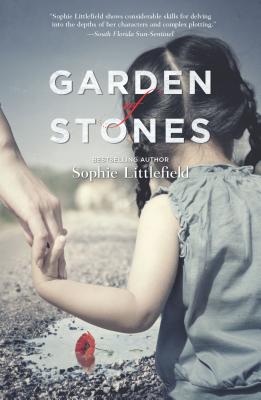Garden of Stones
by Sophie Littlefield
Sophie Littlefield’s latest novel, Garden of Stones, opens in San Francisco in 1978. The first chapter anticipates the murder of an old man. The second chapter introduces Patty Takeda and her mother Lucy. Patty, visiting her mother in the days leading up to her (Patty’s) wedding, wakes to find Lucy having an early morning chat with a police inspector. Lucy is being questioned because she knew the victim decades prior, and neighborhood residents placed her at the scene. With her horrible facial scaring, she’s hard to miss. The third chapter is where the novel’s structure becomes apparent. It flashes us back to the Los Angeles of 1941.
Having just met the caustic older Lucy, we are now introduced to the stunningly beautiful adolescent version. This privileged young girl is about to suffer a series of blows leading up to the United States’ entry into the war. Her Japanese heritage is suddenly a huge liability. From there, the novel moves back and forth in time between the events of 1978 and those in the 1940’s—with the bulk of the tale occurring in the past. Lucy is sent to the Manzanar internment camp, along with her family, friends, and neighbors. It is events that occurred at Manzanar that directly cultivated the woman Lucy was to become—and perhaps to the murder that has occurred.
Now, I have been a fan of Ms. Littlefield’s for years, and I love the sheer breadth and depth of what she writes from comic mysteries to zombie apocalypses. The set-up above seems like another mystery, but truthfully, it’s more of a historic drama. The subject of Japanese internment strikes close to home to me—literally—having spent the past decade living a block from San Francisco’s Japantown. My neighborhood was greatly impacted by this shameful period of California’s history. I think fiction can be a powerful medium for evoking history. Through fiction, stories live on and are humanized.
I also think that a lot of research went into this novel, and yet I felt somewhat frustrated by viewing this history through the eyes of an unsophisticated teenage girl. Those flashback sections of the novel had something of a YA feel about them. Now, I have nothing against young adult fiction—I read a ton of it—but here I was hungering for a little more…detail …maturity … substance. That would be my complaint.
That said, I found myself very caught up in the story of these characters. Littlefield writes, “It was as if her mother had once been an entirely different person, and Patty faulted herself for never having seen far enough into her depths, for not being curious enough to coax out the story until now.” Lucy Takeda lived an extraordinary life in a period of great historic significance. As events led up to what felt like a climax, I realized that I was only at the center of the tale. As Lucy matured, I became more and more invested in her story. The frustration I’d felt earlier in the novel disappeared. Character development has always been Ms. Littlefield’s strength, and that is again the case here. Still, by the time I’d reached the novel’s end, she managed to truly surprise me with a couple of unexpected plot twists. One, in particular, was really cleverly done.
Ultimately, the murder that opens this novel is little more than a framing device, but as such it works well. Garden of Stones is a great choice for readers interested in mother-daughter relationships, or who are simply looking for a great story set against a historic backdrop. While it took me a little while to become fully invested in the tale, the deeper I read, the more I enjoyed this novel.


No comments:
Post a Comment